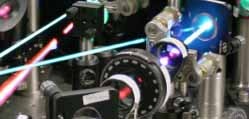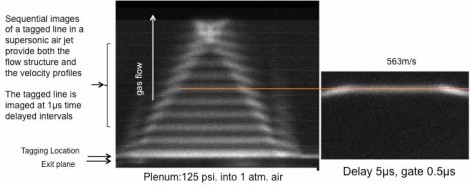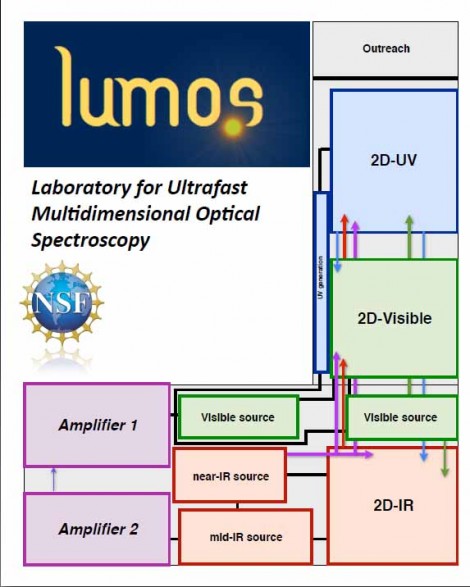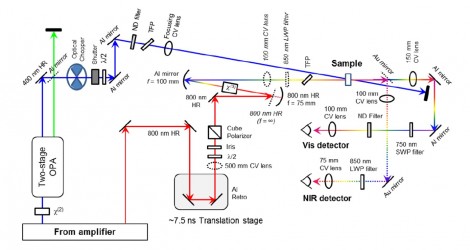
From the advent of time-resolved techniques, researchers have been interested in generating shorter and shorter laser pulse durations to more effectively probe faster and faster events. Nanosecond processes, although still used in photochemistry and laser processing, have been replaced by pulses in the picosecond and femtosecond regime. For micromachining, these ultrafast pulses deliver higher precision – leading to less waste - and present a gentler, non-destructive means for fabricating delicate microelectronic devices. In fundamental research, picosecond and femtosecond time scales represent molecular vibrations, librations, bond dissociations, and many other physical events and features. Because these are transient processes, signal levels can be small. Therefore, an essential characteristic of this experimental methodology is a favorable signal-noise ratio. Experimentally, this requirement means low noise detectors and a low noise laser source.
No longer confined to the lab
Over the past decade, laser manufacturers have focused on developing higher performance lasers with lower noise and improved stability. In 2007, the Spectra-Physics Solstice was introduced as the first mJ energy level ultrafast amplifier built using industrial design principles. Industrial Design means each subcomponent undergoes extensive environmental testing prior to shipment and the finished product is verified using standard industrial reliability test protocol (shake, drop, thermal cycle.) Standard, kinematic mounts were replaced using the uniquely designed, single element EternAlign mounts that have no moving parts and a superior stability profile. These product enhancements are enabling researchers to make their experiments mobile. They are no longer confined to the laboratory and the experimental apparatus, including the laser source, can be transferred to another location, warmed up, and utilized for cutting-edge research. One such method is Femtosecond Laser Electronic Excitation Tagging (FLEET): a spectroscopic technique that can provide instantaneous measurements of air motion and flow structure which is of central importance to the design of high performance aircraft as well as for the study of turbulence other unsteady phenomena.
FLEET is a new method recently invented at Princeton University. It produces long-lived fluorescence in air, nitrogen and other gas mixtures that permits the imaging of motion without requiring a foreign seed material to be introduced. Lines and patterns are written and followed in real time as they move with the flow. One or two millijoule pulses at 100fs generate a tagged line through the focal zone of the laser (Figure 1).

Typical data produced using the FLEET method. Fluorescence tags are generated using mJ-level ultrafast pulses and used to determine velocity profiles of turbulent flow (Courtesy of Dogariu, Miles; Princeton University)
Focusing with a 1 meter lens produces lines that are several centimeters long. Since the lines continue to fluoresce, a single line can be imaged with multiple time delays as it moves with the flow. The tagging mechanism is high order, multi-photon driven dissociation of nitrogen molecules followed by atomic nitrogen recombination and associated “first positive” fluorescence. The motion is recorded using a camera with a fast-gated intensifier. Thus FLEET provides a capability for the study of turbulence as well as boundary layer physics, mixing, shear layers, vortex interactions, etc. The femtosecond laser interaction is so fast that there is not enough time for avalanche breakdown to occur, so the formation of bright sparks is avoided and well-defined lines and patterns can be written. FLEET represents one of the many advantages of using ultrafast, milliJoule level amplifiers for spectroscopy.
Time-resolved spectroscopy
Modern Ultrafast amplifiers have enabled time-resolved spectroscopy for decades. The development of these sources towards producing lower noise, more stable pulse trains has expanded spectroscopic capabilities. Their ease-of-use and increased stability has enabled several advanced multi-user facilities. One such facility is the Laboratory for Ultrafast Multidimensional Optical Spectroscopy (LUMOS) laboratory at the University of Michigan (Figure 1). LUMOS is equipped with state-of-the-art equipment to perform ultrafast multidimensional spectroscopy from the UV to through the mid-IR regions of the spectrum. The laboratory focus is dynamics of macromolecules like DNA and proteins, interfacial photophysics, nanostructures, and understanding the fundamental energy and charge transfer processes that govern photosynthesis and modern photovoltaics.

Schematic diagram of LUMOS – a modern ultrafast laboratory for state-of-the-art time-resolved spectroscopy located at the University of Michigan. Laboratory is capable of ultrafast experiments from the UV to the infrared wavelength range (Image courtesy of Ogilve; University of Michigan).
Understanding the flow of energy and charge is central to the development of efficient artificial photosynthetic and organic photovoltaic systems. The research conducted at the Wasielewski laboratory at Northwestern University has been utilizing ultrafast technology for decades. “The versatility of ultrafast laser technology allows us to study these dynamics by a variety of different time-resolved techniques, such as femtosecond transient absorption spectroscopy, which uses the ~100 fs output of an amplified Ti:sapphire laser split into multiple beams (Figure 3).”

Close-up view of a modern pump-probe spectroscopy apparatus. With this technique, transient species are generated using a higher energy, ‘pump’ excitation source. The transients are investigated using a lower energy ‘probe’ pulse (Image courtesy of Young, Wasielewski; Northwestern University).
To perform this multi-beam, pump-probe spectroscopic technique, one beam is used to excite, or ‘pump’ the energy or charge transfer process. The specific visible wavelength is generated using an optical parametric amplifier (OPA). A second fraction of the laser light is used to generate a broad spectrum probe by either focusing ~1-5 microjoules into a nonlinear crystal such as sapphire for visible/NIR wavelengths, or by generating mid-infrared light by difference-frequency-mixing the NIR output of an OPA. By chopping the excitation beam on/off and comparing the differential transmission of the probe, a transient absorption spectrum of our sample is generated. The time evolution of the spectral tags for the various states of the compounds under investigation are used to determine the dynamics of the energy/charge transfer processes to drive the designs of efficient photo-driven device materials.
The important role of ultrafast lasers
Advancing spectroscopy requires mutual understanding of the required equipment and the required performance specifications. Because modern time-resolved spectroscopy exceeds time scales accessible by electronics alone, ultrafast laser pulses are needed to probe these fundamental processes. Over the past decade, the performance of these laser sources has been significantly improved to provide very low noise, high-energy, and nearly hands-free operation. Multi-pulse pump-probe techniques have been developed to monitor molecular reorientation on the femtosecond and picosecond time scales and enriched our understanding of the fundamental building blocks of living systems. Progress in our understanding of charge transfer processes has led to the development of more efficient solar cells and FLEET aids in our understanding of turbulent events. Ultrafast lasers play a large role in many different spectroscopic techniques and their development is paramount to our continued success.
Written by Ian Read, Senior Product Manager, Spectra Physics






























 Back to Features
Back to Features

























